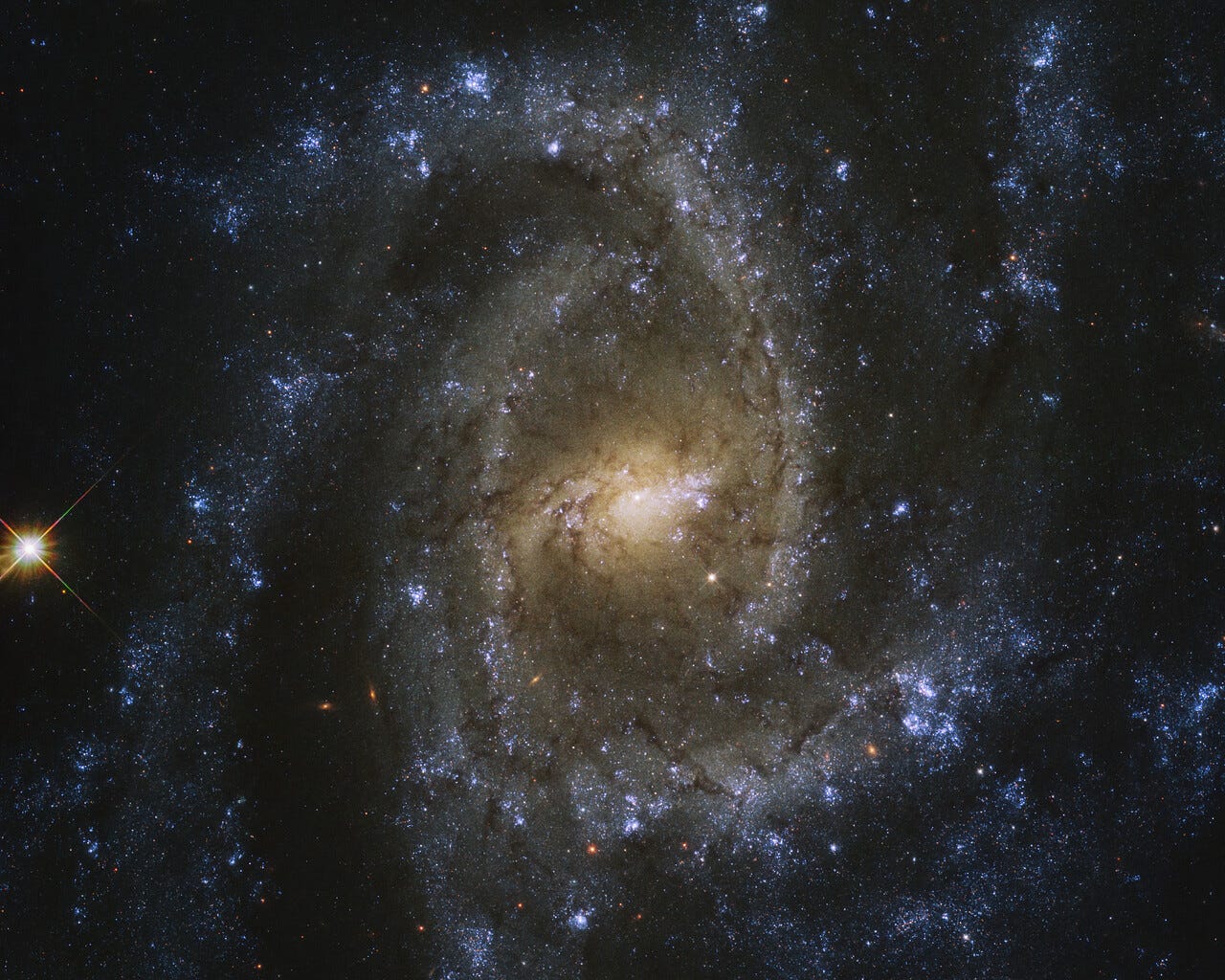
ESA/Hubble & NASA, J. Lee, and the PHANGS-HST Team/Acknowledgement: Judy Schmidt (Geckzilla)
- A spiral galaxy nicknamed “Eye of the Serpent” is 35 million light-years from Earth.
- The Hubble Space Telescope recently snapped a photo of the galaxy, which is about half the width of the Milky Way and has a supermassive black hole at its center.
- Visit Business Insider’s homepage for more stories.
Thirty-five million light-years away sits a mammoth spiral galaxy.
Its distinct arms, where stars and gas are compressed, create the illusion of an eye — which is why astronomers call it the “Eye of the Serpent.”
The Hubble Space Telescope recently snapped a photo of the galaxy, officially named NGC 2835; NASA and the European Space Agency (ESA) released the image this week.
The Eye of the Serpent is located near the Hydra constellation, the largest constellation in our view of the night sky. Although it’s too dim to be seen with the naked eye, it can be spotted using any telescope with an aperture 6 inches or wider.
The galaxy is a little more than half as wide as our own Milky Way, which is also spiral galaxy. At its heart is a supermassive black hole with a mass millions of times greater than the sun.
The flecks of bright blue in the Hubble photograph reflect nearly ultraviolet light. Such light indicates recent or ongoing star formation inside the galaxy.
NASA launched Hubble into Earth's orbit in April 1990 to discover new planets, reveal galaxies, and provide new insights into the nature of black holes.

NASA/ESA
In the coming decade, NASA plans to launch two other space telescopes — named after NASA pioneers James Webb and Nancy Grace Roman — that can image more of our universe in even greater detail.
The 'Eye of the Serpent' isn't the only galaxy Hubble spotted lately
In July, NASA released a Hubble photograph of another distant galaxy. That galaxy, called NGC 2775, is about twice as far from Earth as "Eye of the Serpent" — 67 million light-years away.
NGC 2775 doesn't seem to be forming stars anymore. Astronomers can tell that's the case because of the relatively empty, clear bulge at the galaxy's center.

ESA/Hubble & NASA, J. Lee and the PHANGS-HST Team; Acknowledgment: Judy Schmidt (Geckzilla)
The arms spinning around this galaxy's center are "flocculent" — meaning fluffy and feathery-looking — due to dark lines of dust and puffs of gas clouds.
Millions of young stars shine bright blue through the haze.
Morgan McFall-Johnsen contributed reporting.
